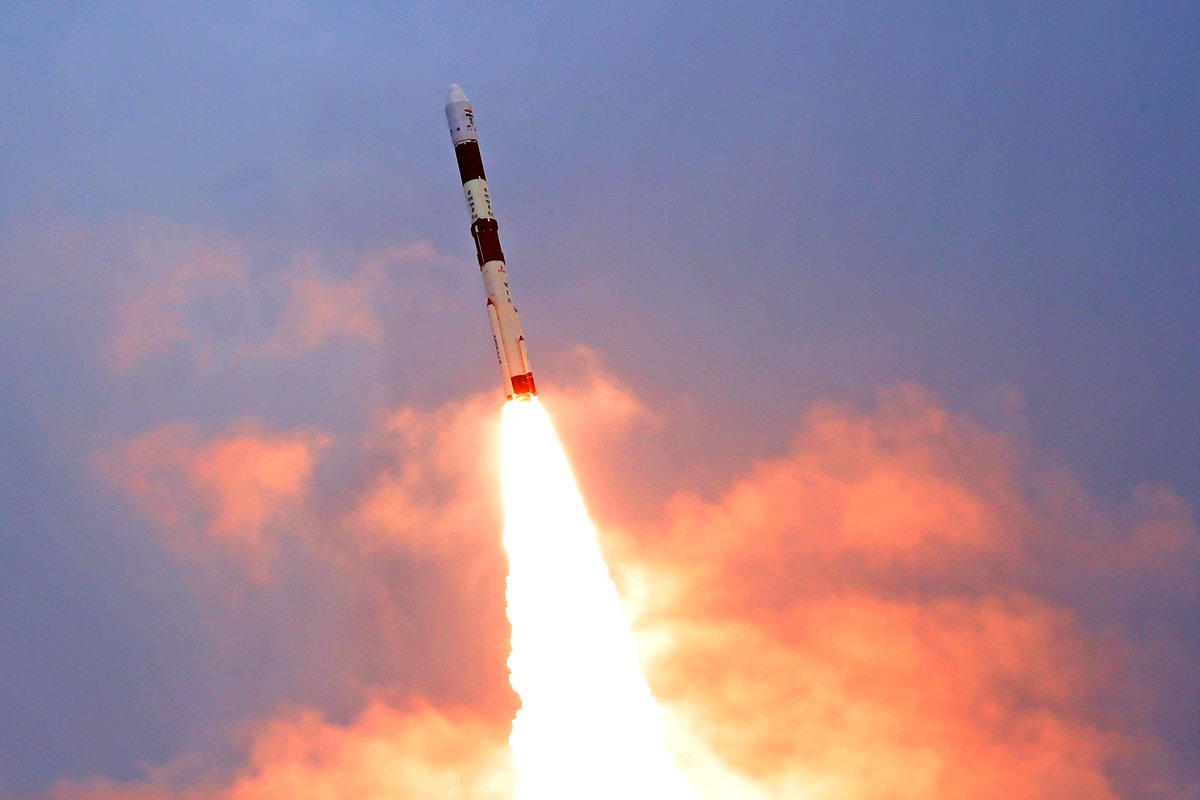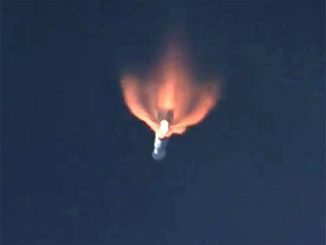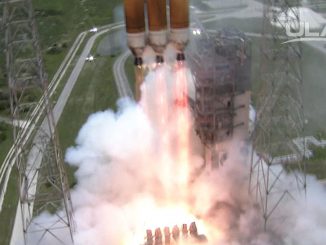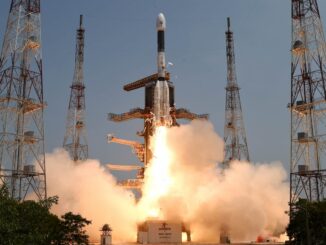
A Polar Satellite Launch Vehicle lifted off Saturday with India’s EOS 1 radar imaging satellite and nine rideshare payloads for customers based in the United States, Luxembourg, and Lithuania. The successful mission was India’s first launch in nearly a year due to delays caused by the coronavirus pandemic.
The 146-foot-tall (44.5-meter) PSLV took off at 0942 GMT (4:42 a.m. EST) Saturday from the Satish Dhawan Space Center, located on India’s east coast around 50 miles (80 kilometers) north of Chennai.
Officials from the Indian Space Research Organization delayed the PSLV’s liftoff 10 minutes due to the threat of lightning at the launch base, but managers ultimately elected to proceed with the countdown.
Two strap-on solid rocket boosters and a solid-fueled core stage ignited with 1.4 million pounds of thrust to power the PSLV off the launch pad. The strap-on motors and core stage completed their burns in the first two minutes of the mission, followed by firings of the PSLV’s liquid-fueled second stage, solid-fueled third stage, and fourth stage engines to place 10 satellites into orbit.
The PSLV flew southeast from the launch base on India’s east coast, targeting an orbital track tilted 37 degrees to the equator. The PSLV’s fourth stage released the 10 satellites into orbit roughly 357 miles (575 kilometers) above Earth less than 20 minutes after liftoff.
Live imagery from a camera on-board the PSLV fourth stage showed the 1,388-pound (630-kilogram) EOS-01 Earth observation satellite separate from the rocket. Minutes later, the nine other smaller payloads deployed.
The mission Saturday was designated PSLV-C49, and it marked the 51st flight of a Polar Satellite Launch Vehicle since 1993.
“Today, I am extremely happy to declare that PSLV-C49 successfully placed the Earth observation satellite EOS-01 as well as nine customer satellites precisely into a 575-kilometer orbit,” said K. Sivan, chairman of ISRO.
Sivan said the EOS-01 satellite immediately unfurled its solar panels to begin generating electricity. The spacecraft will later open a dish-shaped radar antenna to a diameter of 11.8 feet (3.6 meters). The antenna was folded up for launch to fit inside the PSLV’s payload fairing.
Formerly known as RISAT 2BR2, EOS-01 is a radar surveillance craft, joining two similar satellites launched by India in May and December 2019.
In a launch press kit, ISRO said EOS-01 is an “Earth observation satellite intended for applications in agriculture, forestry and disaster management support.”
EOS 1 is believed to be similar to the RISAT 2B and RISAT 2BR1 satellites launched by India last year. If that’s the case, EOS-01 is likely designed for a five-year mission, with an X-band radar imaging instrument capable of resolving structures and features on Earth’s surface, regardless of daylight or weather conditions.
Earth-looking optical telescopes are inhibited by cloudy weather, and only produce usable imagery during daytime.
The RISAT 2B and RISAT 2BR1 satellites — predecessors to EOS-01 — were designed to supply 2 kilowatts of power to their radar instruments, which ISRO said could collect imagery in spotlight, strip and mosaic modes. ISRO released fewer details about the EOS-01 mission than it did for the launches of RISAT 2B and RISAT 2BR1 last year.
The imaging resolution of satellite’s radar from orbit has not been disclosed by ISRO.
Orbiting radar satellites can also detect features, such as camouflaged military assets, on the ground that can escape detection with optical Earth observation satellites. The enhanced observing capability of radar satellites makes them useful for military and intelligence agencies.
The 37-degree inclination orbit selected for the EOS-01 satellite does not provide global radar observation coverage, but it offers regular passes over Indian territory and neighboring Pakistan, a longtime strategic rival to India in the region.
India’s EOS 1 radar observation satellite has successfully deployed from the PSLV’s fourth stage in orbit. https://t.co/zWuLl3601a pic.twitter.com/PDPnpzvO57
— Spaceflight Now (@SpaceflightNow) November 7, 2020
Nine other small satellites rode into orbit with the EOS-01 spacecraft.
The smallsats included four briefcase-sized CubeSats for Kleos Space of Luxembourg, which plans a constellation of small satellites to monitor radio transmissions around the world. The first four satellites are known as Kleos’ Scouting Mission.
Kleos says its satellites will detect and geolocate radio frequency transmissions, providing intelligence on maritime activity for governments and commercial customers. The radio frequency monitoring data will be particularly useful for tracking ships that can’t be monitored using automated identification systems or satellite imagery, according to Kleos.
Four Lemur-2 CubeSats also launched Saturday for Spire, a San Francisco-based company that operates a fleet of commercial smallsats that track shipping traffic and collect weather data.
Spaceflight, a rideshare launch broker based in Washington state, says it managed launch preparations for the eight small Kleos and Spire satellites on the PSLV-C49 mission.
The R2 CubeSat from NanoAvionics of Lithuania also launched Saturday on a technology demonstration mission.
Indian officials halted launch operations at the Satish Dhawan Space Center earlier this year after the onset of the coronavirus pandemic. Government-imposed travel and work restrictions made it difficult to prepare for space missions on India’s launch schedule this year.
“Because of this situation, there are some delays in our missions,” Sivan said last month in a virtual press conference at the 71st International Astronautical Congress.
In remarks after Saturday’s launch, Sivan called the successful mission “very special” and “very unusual.”
“Space activities cannot be done through work from home,” Sivan said.
“When we are talking about launch campaigns and missions like this, each and every engineer, technician, technical assistant, all the employees have to travel all the way from different centers, and they have to assemble and work together at the (launch site).”
Sivan said ISRO teams at the launch site worked with limited staff to meet government-imposed coronavirus safety protocols. He said the launch team ” worked safely without compromising any quality.”
“It is very heartening that their hard work paid off with the excellent success we are seeing,” Sivan said.
Sivan said ISRO has a series of missions scheduled soon after Saturday’s successful PSLV flight.
Another PSLV launch could happen before the end of the year to carry an Indian communications satellite into orbit, followed by the debut flight of India’s new Small Satellite Launch Vehicle. Then a launch with India’s larger Geosynchronous Satellite Launch Vehicle is on ISRO’s schedule, Sivan said.
Email the author.
Follow Stephen Clark on Twitter: @StephenClark1.



